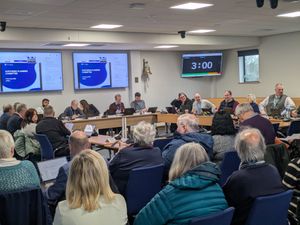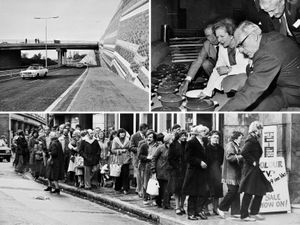Landmark birthday looms on the horizon for a town’s ancient cross
Some call it the Butter Cross. Some call it the Puleston Cross. But either way, it has a big double birthday coming up soon.
Standing in the shadow of Newport’s parish church, the ancient sandstone cross commemorates Sir Roger Puleston, and next year will mark the 750th anniversary of his death.
And a descendant is wondering whether it is time to start thinking about how to mark the anniversary of the erection of the cross, which went up a few years later and has been a local landmark for all those centuries.
Philip Beddows has emailed us to say: “The man it commemorates is Sir Roger de Puleston senior who died in 1272. It was his son, a younger Sir Roger de Puleston (junior), who put up the cross in memory of his father.
“I am descended from Sir Roger de Puleston senior’s sister Amice.
“I wondered whether it may be an idea to mark the anniversary in some way. Sir Roger, a local individual, played an important role when sheriff of the county in releasing the burgesses of Newport from an obligation to the king in relation to the town’s vivary, which is I believe the origin of the town’s coat of arms.”
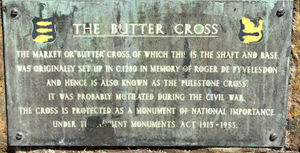
The Vivary Pool, he says, was a medieval fish farm, and the town was committed to provide fresh fish for the royal household, wherever in the country it may have been.
Philip says he has copied in the Rev Merry Smith of St Nicholas’ Church, Newport History Society, and Newport Town Council, in case the idea of marking the anniversary is of interest to them.
The Puleston or Pulestone cross – spellings vary – stands five metres high and is said to have been put up in about 1280, with some accounts saying 1286. It no longer has a cross – the top was knocked off at some point in what is assumed to have been deliberate vandalism at the time of the English Civil War.
Archaeological investigations in about 2010, which are said to have been the first carried out in Newport, discovered new information about the structure and its setting, and poured cold water on a theory that the cross was moved there.
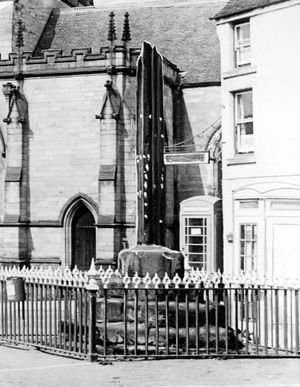
The results were reported in the newsletter of the Shropshire Archaeological and Historical Society in the spring of 2013.
Hi-tech scientific techniques dated a sample of soil beneath the cross base to around 1095 AD, but also detected a “possible disturbance event” around 1635.
The newsletter said the archaeological evidence pointed to Newport’s 17th century Butter Market building having enclosed the cross (hence the alternative name of the Butter Cross) before the Butter Market was demolished in 1866 (other accounts say it was demolished in 1858-60).
Newport History Society had a theory that the cross could have been moved to its present location in 1633, but the newsletter account, written by Tim Malim and George Nash of SLR Consulting Ltd, describes that hypothesis as unlikely.
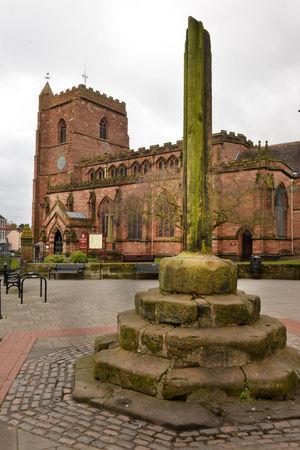
If it had been moved, they say, the buried soil beneath would have been disturbed and so would not have recorded such an early date as that found by the OSL (optically stimulated luminescence) examination.
They add: “In addition this location, within the market square adjacent to the church, would be the expected position in which a medieval market cross should be found.”
Another interesting snippet about the cross’ history comes from an October 1958 picture of it in our files which had the caption “Newport’s Butter Cross has been without a top for three centuries. A suggestion has now been made that it should be restored.”
Did this mean that there was discussion about restoring the missing cross on top?
The cross at that time was surrounded by railings – none exist today.




